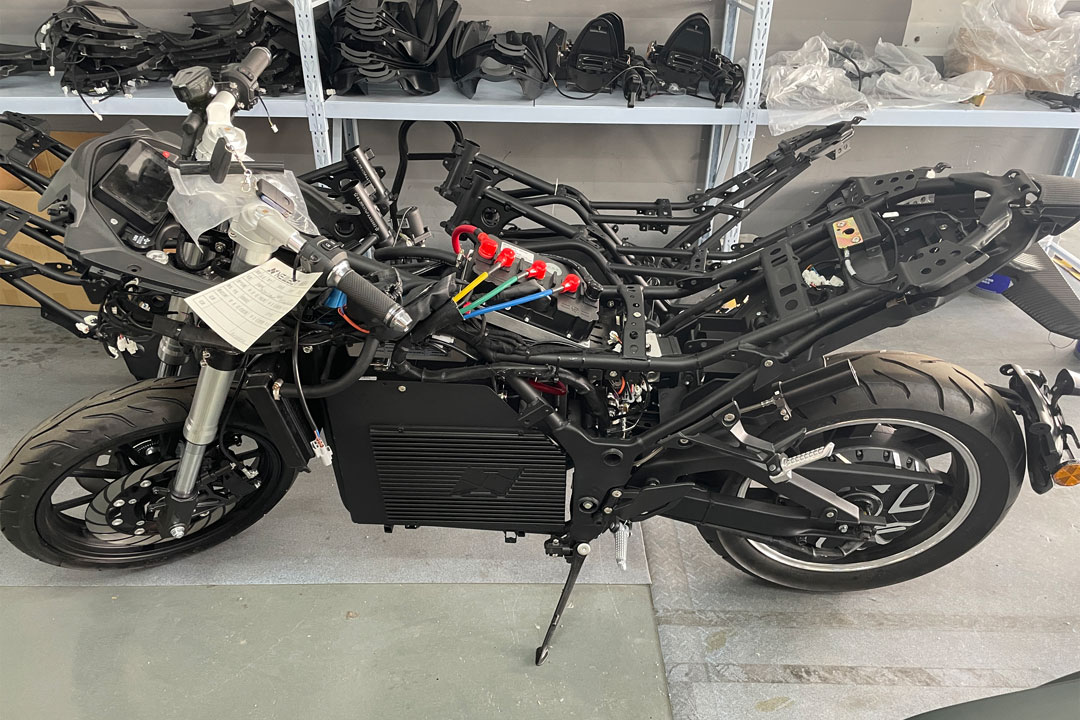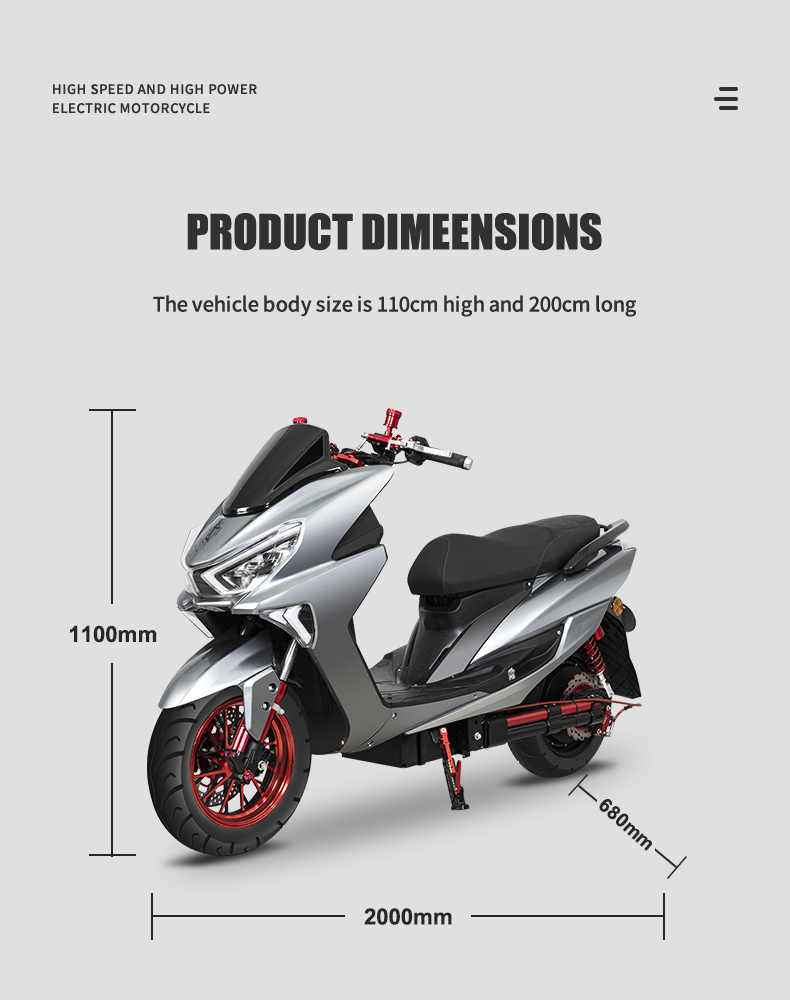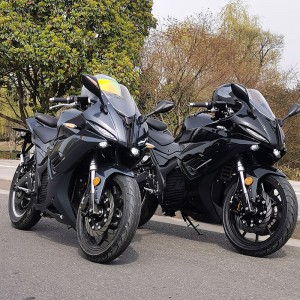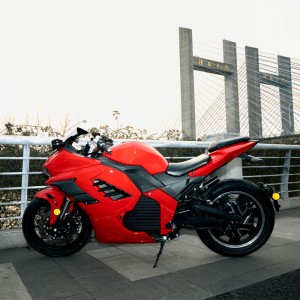Electric motorcycles, as a mode of transportation, directly impact the safety of both riders and pedestrians. Through factory inspection standards, manufacturers ensure that motorcycles do not pose serious safety hazards during normal usage, addressing functionalities such as the braking system, lighting system, and tires. Factory inspection standards contribute to maintaining certain quality standards throughout the manufacturing process, preventing defects or poor craftsmanship, thus enhancing the overall product quality and reducing the pressure on after-sales services. Many countries and regions have regulations and standards regarding the safety of transportation vehicles, and factory inspection standards help manufacturers ensure compliance with these regulations, contributing to the industry's legitimacy and sustainability.
Through factory inspection standards, manufacturers can guarantee that their products do not present safety issues during regular operation. Key safety aspects include:
Braking System
Factory inspection standards require testing critical components such as brake discs, brake pads, and brake fluid to ensure the effectiveness and stability of the braking system. This helps prevent brake failures during operation, enhancing the overall safety of the motorcycle.
Lighting System
Inspecting the functionality of front and rear lights, turn signals, and brake lights ensures that the motorcycle provides adequate visibility during nighttime or adverse weather conditions, reducing the likelihood of traffic accidents.
Tires
Factory inspection standards also mandate testing the quality and performance of tires to ensure they provide sufficient traction and stability across various road conditions.
Quality Control and Regulatory Compliance
Manufacturing Quality Standards
Factory inspection standards contribute to manufacturers adhering to specific quality standards throughout the production process. This helps prevent defects or poor craftsmanship, improving the overall product quality and reducing the burden on after-sales services.
Compliance with Regulations
Many countries and regions have regulations and standards regarding the safety of transportation vehicles. By following these regulations, factory inspection standards help manufacturers ensure their products comply with relevant laws, maintaining the industry's legitimacy and sustainability.
Specific Inspection Items
Power System
Inspecting the motorcycle's power system to ensure the battery, motor, and related control systems meet specified standards. This includes evaluating the safety of the charging system and the lifespan of the battery.
Structural Stability
Conducting inspections on the overall structure of the electric motorcycle to ensure stability and durability. This includes assessing the quality and performance of components such as the frame, suspension system, and tires.
Emission Standards
Testing the motorcycle's emission performance to ensure it does not contribute excessively to environmental pollution. This involves addressing battery recycling and reuse to minimize environmental impact.
In conclusion, factory inspection standards for electric motorcycles play a crucial role in guaranteeing product safety and maintaining quality standards. By ensuring compliance with relevant regulations and standards, manufacturers can provide consumers with a more reliable and secure transportation option, contributing to the sustainable development of the electric motorcycle industry.
Cost-Effective, Economically Affordable
Electric motorcycles have lower maintenance costs. Due to the absence of traditional motorcycle components such as engines and gearboxes, there is less need for frequent part replacements, leading to significantly reduced repair costs. Taking the "OPIA JCH" as an example, its maintenance cost is only half that of traditional motorcycles, saving users a considerable amount of money.
Quiet Environment, Improved Urban Traffic
The noise generated by electric motorcycles during operation is much lower than that of traditional motorcycles, effectively alleviating urban traffic noise issues. This not only enhances the quality of life for city residents but also contributes to reducing traffic congestion. For instance, the "OPIA JCH" produces a maximum noise level of only 30 decibels, compared to the 80 decibels of traditional motorcycles, effectively reducing urban noise pollution.
Efficient Energy Use, Impressive Range
Electric motorcycles utilize advanced battery technology, resulting in high energy efficiency. The "OPIA F6," for example, requires only 4 hours for a full charge, providing a range of up to 200 kilometers—far surpassing traditional motorcycles. This not only facilitates users' daily usage but also reduces the frequency of charging, saving on electricity costs.
Technologically Advanced, Intelligent Driving Experience
Electric motorcycles excel in terms of intelligence and technology. The "OPIA JCH" incorporates advanced navigation systems, intelligent anti-theft systems, and other technologies, allowing users to control and locate their motorcycles remotely through a mobile app. This technological advancement not only enhances the driving experience but also ensures the safety and reliability of electric motorcycles.
Policy Support, Encouraging Adoption
Various countries have introduced policies supporting electric transportation, creating a favorable environment for the promotion of electric motorcycles. Policies such as free parking for electric motorcycles and dedicated lanes for low-speed electric vehicles in some cities effectively encourage consumer adoption.
Lightweight and Agile, Suitable for Various Scenarios
Compared to traditional motorcycles, electric motorcycles are more lightweight and agile. The "OPIA F6," designed specifically for urban commuting, features a compact body that makes maneuvering through busy city streets more convenient, suitable for various scenarios such as commuting and shopping.
Technological Innovation, Driving Industry Upgrades
The rise of the electric motorcycle industry has driven technological innovations. The "OPIA F6" integrates artificial intelligence technology to learn users' driving habits and intelligently adjust the vehicle's performance, providing a more personalized driving experience. This kind of technological innovation not only enhances product competitiveness but also propels the entire industry towards upgrades.
Reduced Resource Dependency, Sustainable Development
Electric motorcycles, relying on electricity as a power source, reduce dependence on finite resources compared to fuel-powered motorcycles. The "OPIA JCH" electric motorcycle further reduces energy waste through efficient energy utilization, contributing to sustainable development goals.
Diverse Brands, Meeting Different Needs
The electric motorcycle market has seen the emergence of numerous brands, catering to diverse consumer needs. "Cyclemix" offers a variety of styles, colors, and configurations, allowing users to choose the most suitable electric motorcycle based on personal preferences and purposes, further meeting the diverse demands of consumers.
- Previous: Electric Tricycles: Global Rise Led by China
- Next: Trends in Global Consumption and Purchase of Electric Tricycles
Post time: Jan-26-2024







